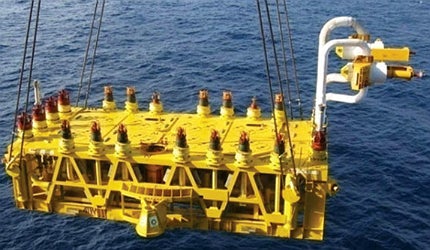Baobab lies in Block CI-40, located about 25km off the coast of Cote d’ Ivoire (Ivory Coast). Water depths at the location range from 900m (2,952.7ft) to 1,300m (4,265ft).
The field is operated by Canadian Natural Resources (CNR), which holds 57.61% interest in the project. Svenska Petroleum Exploration holds 27.39% and the national oil company, Petroci Holding, holds the remaining 15% interest in the development.
The Baobab field is located south of the Espoir field, which is also operated by CNR. Production at Baobab was commenced in August 2005. In 2011, the field produced 7.2 million barrels of oil at an average daily production rate of 19,700 barrels per day (bpd).
The field partners are currently carrying out the phase III drilling campaign, aimed at adding new production wells to the field. Drilling is expected to start in 2014 with production starting in 2015.
Field discovery, geology and reserves
The Baobab field was discovered in March 2001 by the Baobab 1X well. The well was drilled to a depth of 452.6m (1,485ft) of water. It flowed at the rate of 6,700bpd. A second well, named Baobab 2X, was drilled in 2002 to appraise the field. It was drilled to a depth of 2,880m (9,449ft) in 5,052m (16,574.8ft) of water. The well flowed at a rate of 10,000bpd.
Baobab is part of the Côte d’Ivoire sedimentary basin of the Lower Cretaceous age. The basin was formed after the breakup of continents and spreading of the South Atlantic Ocean. It includes various sequences, such as Albian, Cenomanian, Senonian and Maastricht Ian. Baobab extends across a deep canyon in the basin.
Estimated reserves of the field are 700 million barrels of oil. Recoverable reserves are estimated at 200 million barrels of oil with an 23° API.
Initial development at Baobab
CNR commenced the development of the Baobab oil field in 2003. The field is produced through eight production wells and three water injection wells located in 1,219m (4,000ft) of water. Transocean Richardson deepwater drilling rig was used to drill the wells.
The wells are tied back to four subsea manifolds. Flowlines from the manifolds connect the wells to the Baobab Ivoirien MV10 floating, production, storage and offloading (FPSO) vessel.
Produced oil is transported onshore from the FPSO through shuttle tankers. Natural gas produced is used for power generation onboard the FPSO. Excess gas is sent to the Espoir Invoirien FPSO for transportation onshore through a pipeline.
Phase III development of the Ivorian oil field
The field is witnessing a stable decline in production from wells drilled in the initial development phase. CNR completed the phase II drilling programme for the field in the third quarter of 2011. An extensive geological model for the Baobab reservoir was developed based on the drilling programme. CNR plans to further explore the reservoir during the phase III drilling programme.
The programme will enable full utilisation of the existing field infrastructure. Five production wells and one water injection well are expected to be drilled during this phase. The drilling programme is also expected to provide additional information regarding future drilling campaigns at the field.
Baobab Ivoirien MV10 FPSO details
MODEC was awarded the contract to design, construct and commission the Baobab FPSO. The FPSO was installed at the field in August 2005 in 970m (3,182.4ft) of water. It is one of the deepest FPSOs in the world.
The FPSO has a processing capacity of 70,000bpd of oil and 75 million cubic feet of natural gas. It is also capable of injecting 100,000bpd of water and has a storage capacity of two million barrels. The FPSO has been designed to enable expansion of topsides capacity.
MODEC is responsible for operating the FPSO for a period of ten years, with ten one year extension options.
Subsea system for the development
The subsea system at the field includes two six-slot production templates and two four-slot injection templates, with large suction foundations. The subsea trees at the field are connected to the templates through spools which terminate at the manifolds. The manifolds are connected to the field’s pipeline system through flowlines.
Contractors for the African offshore oil field
In January 2013, FMC Technologies was awarded a contract to supply subsea equipment for the field. The scope of supply includes subsea trees, wellheads, manifolds and control systems.
CNR had awarded two contracts to FMC earlier, for the Baobab field.
The first contract, awarded in 2003, was an engineering, procurement and construction contract for supplying subsea systems for the development of the field. FMC won another contract in 2007 to supply wellhead systems, enhanced horizontal subsea trees (EHXTs) and a tie-in system.
Technip supplied, installed and commissioned rigid pipelines, flexible risers and umbilicals for the field as part of a $125m contract. Subsea 7 was subcontracted by Technip to install the water injection line. The mooring system for the FPSO was supplied by Aker Marine Contractors. The external turret for the FPSO was supplied by Sofec.
Related content
TEN Development Project, Deepwater Tano License, Ghana
The TEN development project includes the collective development of three hydrocarbon accumulations – Tweneboa, Enyenra (formerly, Owo) and Ntomme.
Espoir Field, Block CI-26, Cote d’Ivoire (Ivory Coast)
The Espoir field lies in Ivory Coast block CI-26, 19km offshore south of Jacqueville, and 60km south-west of Abidjan.











